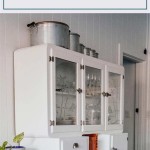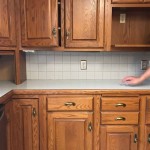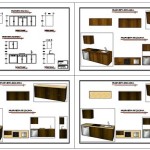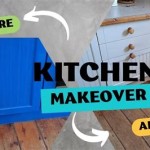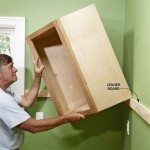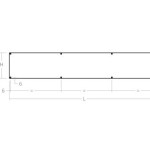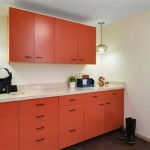Kitchen Cabinet Lining Ideas: Protecting and Enhancing Your Storage Spaces
Kitchen cabinets are a significant investment and a crucial element in the overall functionality and aesthetic of any kitchen. Protecting them from damage, wear and tear, and potential messes is paramount to maintaining their longevity and appearance. Lining kitchen cabinets is a practical and relatively simple solution that offers numerous benefits, from preventing scratches and spills to improving organization and creating a more hygienic environment. This article explores various kitchen cabinet lining ideas, materials, and considerations to help homeowners choose the best option for their needs.
Choosing the right cabinet liner involves considering several factors, including the type of cabinets, the intended use of the cabinet space, the homeowner’s budget, and desired aesthetic. A variety of materials are available, each with its own strengths and weaknesses. Understanding these options allows for informed decisions that maximize the effectiveness and longevity of the cabinet lining.
Understanding the Benefits of Cabinet Liners
Cabinet liners are not merely decorative additions; they serve several important purposes. Primarily, they act as a protective barrier between the cabinet surface and the contents stored within. This protection extends to various potential damages, including scratches from dishes, spills from leaky containers, and general wear and tear from frequent use.
One of the most significant benefits is the ease of cleaning. Instead of scrubbing potentially porous cabinet surfaces to remove spills or stains, a cabinet liner can simply be wiped clean or, in some cases, easily replaced. This is particularly useful in areas prone to spills, such as under the sink or in cabinets storing cleaning supplies.
Further, cabinet liners contribute to a more organized and visually appealing space. By providing a uniform surface, they can make the contents of the cabinet appear neater and more accessible. Some liners also offer non-slip surfaces, preventing items from shifting or sliding around, which can be particularly beneficial for delicate or irregularly shaped objects.
Finally, certain cabinet liners can offer additional benefits such as moisture absorption. This is crucial in preventing mold and mildew growth, especially in cabinets located near sources of water. Antimicrobial liners are also available, providing an extra layer of protection against bacteria and germs.
Exploring Different Types of Cabinet Liners
The market offers a wide range of cabinet liners, each made from different materials and designed for specific purposes. Understanding the characteristics of each type is crucial for selecting the most appropriate option for a particular kitchen.
Non-Adhesive Shelf Liners: These are the most common and versatile type of cabinet liner. They are typically made from plastic, foam, or rubber and are designed to sit loosely on the cabinet surface. Their primary advantage is ease of installation and removal, making them ideal for renters or those who prefer a non-permanent solution. Non-adhesive liners are available in a variety of colors, patterns, and textures, allowing for customization to match the kitchen décor. Many also offer non-slip surfaces to prevent items from sliding.
Adhesive Shelf Liners: These liners feature an adhesive backing that allows them to be securely attached to the cabinet surface. This provides a more permanent and stable solution, preventing the liner from shifting or bunching up. Adhesive liners are often made from vinyl or other durable materials and are available in a wide range of designs, including solid colors, patterns, and even faux wood finishes. While they offer greater stability, adhesive liners can be more challenging to install and remove, and may leave residue behind.
Solid Surface Liners: These liners are typically made from materials like acrylic or melamine and are designed to mimic the look of solid surface countertops. They provide a durable and waterproof surface that is easy to clean and maintain. Solid surface liners are often used in high-end kitchens or in areas where a more upscale look is desired. They are typically more expensive than other types of liners and may require professional installation.
Cork Liners: Cork is a natural and sustainable material that offers excellent cushioning and noise reduction. Cork liners are ideal for cabinets storing delicate items, such as glassware or china. They are also naturally antimicrobial and resistant to mold and mildew. Cork liners are typically available in sheets or rolls and can be easily cut to size. However, they may be more susceptible to staining and require more frequent cleaning than other types of liners.
Drawer Organizers with Integrated Liners: While not technically a liner itself, integrated drawer organizers often include a liner made of felt, rubber, or similar material. This provides a customized solution for drawer organization, preventing items from sliding and protecting the drawer surface from scratches. These organizers are available in a variety of sizes and configurations to fit different drawer types and storage needs.
Installation Techniques and Best Practices
Regardless of the type of cabinet liner chosen, proper installation is crucial to ensure its effectiveness and longevity. Following these best practices will help achieve a professional and durable result.
Preparation is Key: Before installing any cabinet liner, thoroughly clean the cabinet surface. Remove any debris, spills, or stains using a mild detergent and water. Allow the surface to dry completely before proceeding. Smooth, clean surfaces provide the best adhesion for adhesive liners and prevent unevenness for non-adhesive liners.
Accurate Measurement and Cutting: Measure the inside dimensions of the cabinet or drawer accurately. Use a sharp utility knife or scissors to cut the liner to the correct size, allowing a slight overlap for trimming. For adhesive liners, it is often helpful to create a template using paper or cardboard before cutting the actual material.
Installing Non-Adhesive Liners: Simply place the liner inside the cabinet or drawer, ensuring that it fits snugly. Trim any excess material with a sharp utility knife. Consider using double-sided tape in corners if you want to slightly secure the liner and prevent shifting. Double check that the liner does not impede the closure of the cabinet door or drawer.
Installing Adhesive Liners: Peel back a small portion of the backing paper and align the liner with the edge of the cabinet or drawer. Gradually peel back the remaining backing paper while smoothing the liner onto the surface with a smoothing tool or a clean cloth. This helps to prevent air bubbles and ensure a secure bond. Use a utility knife to trim any excess material.
Addressing Air Bubbles: If air bubbles appear during the installation of adhesive liners, use a pin or needle to create a small hole in the bubble and then smooth the liner down to release the air. This will prevent the bubble from reappearing.
Securing Edges: For both adhesive and non-adhesive liners, consider using a bead of caulk or sealant along the edges to further secure the liner and prevent moisture from seeping underneath. This is especially important in areas prone to spills or moisture, such as under the sink.
Allowing Time to Cure: After installing an adhesive liner, allow it to cure for at least 24 hours before placing items inside the cabinet or drawer. This allows the adhesive to fully bond to the surface and ensures a long-lasting hold.
Choosing the Right Tools: Use a sharp utility knife or scissors for cutting the liner. A smoothing tool or clean cloth helps to remove air bubbles when installing adhesive liners. A measuring tape and pencil are essential for accurate measurements and markings. A level can be helpful for ensuring that the liner is installed straight, especially for larger surfaces.
By following these installation techniques and best practices, homeowners can effectively install cabinet liners that provide long-lasting protection and enhance the functionality and appearance of their kitchen cabinets.
In conclusion, effectively lining kitchen cabinets is a multifaceted process. It involves careful selection of materials based on specific needs and meticulous installation to ensure longevity and optimal performance. By understanding the various options and techniques discussed, homeowners can make informed decisions that safeguard their investment and enhance the overall kitchen environment.

Simple Diy Drawer And Shelf Liners

Simple Diy Drawer And Shelf Liners

Simple Diy Drawer And Shelf Liners

Simple Diy Drawer And Shelf Liners

Give Your Kitchen A Colorful Makeover On The

Designing Your Kitchen Cabinet Liner Ideas Décoration Maison Idées Pour La Meuble Cuisine

25 Clever Cleaning Organizing S Using Shelf Liners Making Lemonade

8 Reasons You Should Use Shelf Liner In Your Kitchen Jam Organizing Wilmington Nc

Making Things Pretty Drawer Shelf Liners The Inspired Room

Simple Diy Drawer And Shelf Liners
Related Posts


